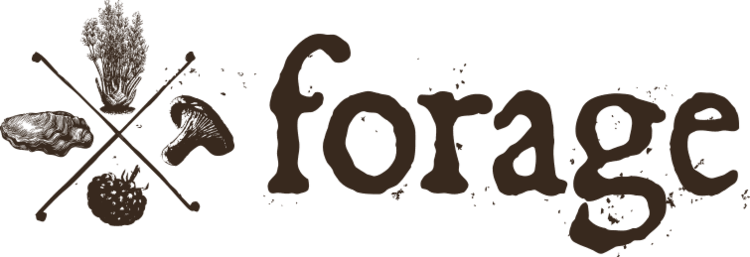Chanterelle Foraging in Northern California: How to Find, Identify, and Cook These Delicious Wild Mushrooms
Nothing beats a day spent foraging for chanterelles in the woods of Northern California. These delicious wild mushrooms are highly sought after, and can often be found in abundance throughout the region during the winter months. With just a bit of knowledge, anyone can find and identify these mushrooms, and even cook them up into a delicious meal. In this blog post, we'll discuss the basics of chanterelle foraging in Northern California, including where to find them, how to identify them, how to clean them, and how to cook them.
Where to Find Chanterelles in Northern California
If you’re looking for a delicious wild mushroom to add to your outdoors cooking, then look no further than the Chanterelle. Found throughout the forests of Northern California, these brightly colored mushrooms are a great addition to any meal.
Chanterelles can usually be found under conifers or near oak trees in the late fall and winter. You can spot them by their bright orange-yellow color and funnel-like shape. They also have a sweet aroma that is unmistakable once you become familiar with it.
If you’re new to eating wild food, the best way to get started is by joining a mushroom foraging group or taking a class on identifying wild mushrooms. There are lots of experienced foragers who will be able to show you where to find chanterelles and provide tips on harvesting them safely.
Once you get comfortable hunting chanterelles, you can start exploring more remote areas of the forest. Look for south-facing slopes, areas with lots of moisture, and places with plenty of rotting wood – these are all great spots for finding chanterelles.
As with all wild mushrooms, it’s important to double-check your finds before consuming them; never eat a wild mushroom unless you are 100% sure of its identification.
Now that you know where to find them, it’s time to start your chanterelle foraging journey! With a bit of practice and patience, you’ll soon be enjoying delicious chanterelles in your outdoor cooking.
How to Identify Chanterelles
When foraging for wild mushrooms, correctly identifying the species you are about to eat is essential for safety. Chanterelle mushrooms (Cantharellus cibarius) have a unique set of identifying characteristics that make them easy to spot in the wild.
Chanterelles have an orangish-yellow color, with a wavy cap that appears ridged or pleated, like an accordion. They also have a strong, fruity odor and white or pale yellow gills that run down the stem. Additionally, chanterelles have no true ‘ring’ on the stem like many other mushroom varieties.
It’s important to note that chanterelles can be easily confused with Jack-O-Lantern mushrooms, which are toxic and should not be eaten. To differentiate between the two, look closely at the gills: Jack-O-Lantern mushrooms have bright orange, forked gills that do not run down the stem.
If you are ever unsure, it is best to leave the mushroom alone and consult with an expert before attempting to cook wild mushrooms. Knowing the safe types of edible mushrooms will help ensure you have a successful and delicious foray into eating wild food.
How to Clean Chanterelles
If you’ve foraged for chanterelles in Northern California, then you’re likely eager to start cooking with them. Before you do, however, it’s important to know how to properly clean these wild mushrooms.
Start by lightly brushing off any dirt with a soft-bristled mushroom brush.
If you need to get rid of bugs, insects, or other debris, give them a quick rinse in a strainer and immediately pat them dry with paper towels.
Once the chanterelles are cleaned and dried, cut away any parts that are tough or woody. Chanterelles have gills running down the stem so it’s best to trim away the stem if needed. Slice them thinly before cooking to ensure even cooking.
When cooking wild mushrooms, be sure to eat them as soon as possible after picking. Eating wild food can be a great way to connect with nature, but make sure you only forage for and eat edible mushrooms that you can safely identify. With chanterelles, you can enjoy their unique flavor when cooked in all sorts of dishes from soups and stews to pasta and pizza.
How to Cook Chanterelles
Cooking wild mushrooms can be a truly rewarding experience. Chanterelles are an incredibly versatile ingredient that can be added to a variety of dishes, from soups and stews to omelettes and stir fries. With their subtle yet distinct flavor, they make a great addition to any meal.
When cooking with chanterelles, it’s important to clean them first, removing any dirt and debris. Once they’re ready, you can get creative! Here are some ideas for dishes featuring chanterelles:
• Chanterelle Risotto – Cook risotto according to your preferred recipe, adding chopped chanterelles near the end of the cooking time.
• Chanterelle Soup – Sautee diced onions and garlic in olive oil until fragrant, then add cubed potatoes and cook for a few minutes before adding vegetable or chicken broth and bringing to a boil. Simmer for 10 minutes before adding cleaned and diced chanterelles. Simmer for another 10 minutes before serving.
• Chanterelle Pasta – Sauté onions and garlic in olive oil before adding chanterelles and cooking until they’ve softened. Add cream and parmesan cheese, simmering until the sauce thickens before pouring over cooked pasta of your choice.
Eating wild food can be a delicious experience and chanterelles are no exception. Whether you’re using them as a main ingredient or just as a side dish, they’re sure to add a unique flavor to your next meal.


